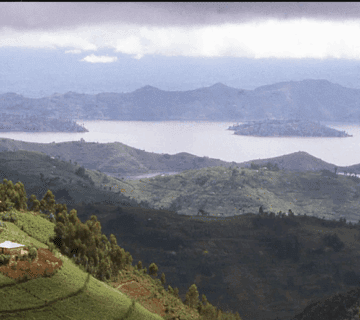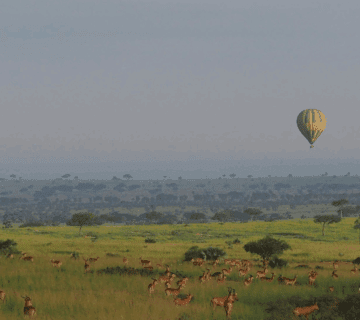How to Pack Light for a Week-Long Trek in Tanzania
Embarking on a week-long trek in Tanzania is an adventure of a lifetime. Whether you’re summiting Mount Kilimanjaro, exploring the remote trails of the Ngorongoro Conservation Area, or trekking through the lush Usambara Mountains, packing light is essential for both comfort and success. Carrying too much weight can slow you down, drain your energy, and even lead to unnecessary discomfort. On the other hand, packing smart ensures you have everything you need without the burden of excess baggage.
This guide will walk you through the art of packing light for a week-long trek while ensuring you’re well-prepared for Tanzania’s diverse climates and rugged terrains. By following these tips, you’ll move more freely, enjoy the journey, and focus on the breathtaking landscapes rather than a heavy backpack.
Why Packing Light Matters on a Week-Long Trek
Before diving into the packing list, it’s important to understand why traveling light is crucial for a week-long trek:
-
Reduces Physical Strain – Every extra pound adds pressure on your knees, back, and legs, making the trek more exhausting.
-
Increases Mobility – A lighter pack allows for better balance, especially on uneven or steep trails.
-
Saves Energy – The less weight you carry, the more stamina you’ll have for long hiking days.
-
Easier Logistics – Porters (if you’re using them) will appreciate a lighter load, and you’ll avoid overpacking fees on flights.
-
Simplifies Decision-Making – Fewer items mean less time wasted searching through your bag.
Now, let’s break down how to pack efficiently for a week-long trek in Tanzania.
Step 1: Choose the Right Backpack
Your backpack is your lifeline, so selecting the right one is critical. For a week-long trek, a 40-50 liter backpack is usually sufficient if you’re packing smartly. Look for these features:
-
Lightweight yet durable material (e.g., ripstop nylon)
-
Adjustable shoulder and hip straps for proper weight distribution
-
Multiple compartments for organized packing
-
Rain cover (Tanzania’s weather can be unpredictable)
Pro Tip: Test your backpack fully loaded before the trek to ensure comfort.
Step 2: Clothing – Less Is More
Tanzania’s trekking routes can range from scorching hot to freezing cold, especially at higher altitudes. The key is layering—bringing versatile pieces that can be mixed and matched.
Essential Clothing Items:
-
Moisture-Wicking Base Layers (x2) – Merino wool or synthetic fabrics keep you dry.
-
Insulating Mid-Layers (x1-2) – A fleece or lightweight down jacket for chilly mornings/nights.
-
Outer Shell (x1) – A waterproof and windproof jacket.
-
Quick-Dry Trekking Pants (x2) – Convertible pants are a great option.
-
T-Shirts (x2-3) – Lightweight, breathable, and quick-drying.
-
Long-Sleeve Shirt (x1) – For sun protection.
-
Underwear (x4-5) – Moisture-wicking material.
-
Hiking Socks (x3-4 pairs) – Wool or synthetic blends to prevent blisters.
-
Warm Hat & Gloves – Essential for high-altitude treks like Kilimanjaro.
-
Sun Hat & Bandana – For sun protection and sweat absorption.
What NOT to Bring:
-
Heavy cotton clothing (retains moisture)
-
Excessive outfits (stick to functional layers)
-
Bulky jackets (opt for compressible down instead)
Step 3: Footwear – Quality Over Quantity
Your feet will be your most valuable asset on a week-long trek, so invest in the right footwear:
-
Sturdy Hiking Boots – Waterproof, ankle-supporting, and well broken-in.
-
Lightweight Camp Shoes – Sandals or trail runners for resting at camp.
-
Gaiters (Optional) – Useful for muddy or dusty trails.
Pro Tip: Wear your boots on the flight in case your luggage gets delayed!
Step 4: Sleeping Gear – Stay Warm & Comfortable
Nights in Tanzania’s mountains can be freezing. Here’s what to pack:
-
Sleeping Bag (Rated for Below Freezing) – A lightweight, compressible down bag.
-
Sleeping Bag Liner – Adds warmth and keeps your bag clean.
-
Inflatable Sleeping Pad – Provides insulation and comfort.
If you’re trekking with a tour operator, some of these may be provided—double-check beforehand.
Step 5: Essential Gear & Accessories
These items are non-negotiable for a safe and enjoyable trek:
-
Trekking Poles – Reduces knee strain and improves balance.
-
Headlamp + Extra Batteries – Essential for early starts and nighttime.
-
Water Bladder or Bottles (2-3L capacity) – Hydration is key at high altitudes.
-
Water Purification Tablets or Filter – Avoid plastic waste and ensure safe drinking water.
-
Sunglasses (UV Protection) – Snow glare at high altitudes can be harsh.
-
Duffel Bag (for porters, if applicable) – A lightweight, waterproof bag for extra gear.
Step 6: Toiletries & Personal Items
Keep hygiene simple and eco-friendly:
-
Biodegradable Soap & Wet Wipes – For quick cleanups.
-
Toothbrush & Toothpaste (Travel-Sized)
-
Sunscreen (SPF 50+) – High-altitude sun is intense.
-
Lip Balm with SPF
-
Hand Sanitizer
-
Basic First Aid Kit – Band-aids, blister treatment, pain relievers, altitude sickness meds (if needed).
Step 7: Food & Snacks
While most meals are provided on guided treks, having high-energy snacks is a game-changer:
-
Nuts & Dried Fruit
-
Energy Bars/Gels
-
Electrolyte Tablets – Helps with hydration and altitude adjustment.
Step 8: Miscellaneous Must-Haves
-
Passport & Permits – Keep them in a waterproof pouch.
-
Cash (Small Bills) – For tips and small purchases.
-
Camera or Smartphone – With extra batteries/power bank.
-
Journal & Pen – To document your journey.
-
Lightweight Daypack – For summit attempts or side hikes.
Final Packing Tips for a Week-Long Trek
-
Roll, Don’t Fold – Saves space and reduces wrinkles.
-
Use Packing Cubes – Keeps items organized and compressed.
-
Wear Your Bulkiest Items on Travel Days – Saves backpack space.
-
Do a Test Pack – Adjust as needed before departure.
-
Leave Non-Essentials Behind – If you’re doubting it, you probably don’t need it.
Travel Light, Trek Far
Packing light for a week-long trek in Tanzania isn’t about sacrificing comfort—it’s about maximizing freedom. Every gram you leave behind translates to more energy for the trail, more joy in the journey, and more space for the memories you’ll create.
By following this guide, you’ll be well-equipped to tackle Tanzania’s stunning landscapes without the burden of unnecessary weight. Remember, the best adventures are about experiences, not possessions. So pack smart, embrace the challenge, and let the mountains inspire you.
Happy trekking! 🚶♂️🌍



